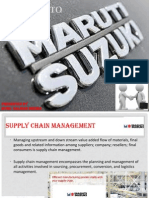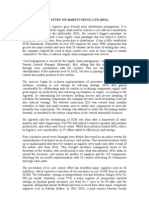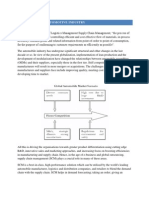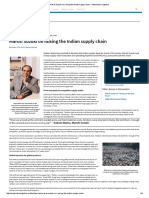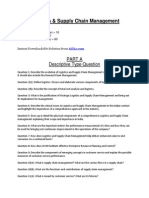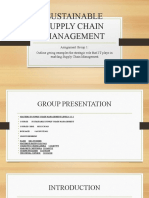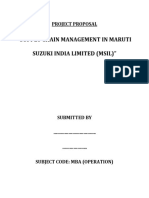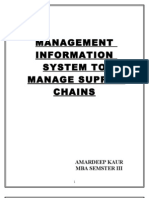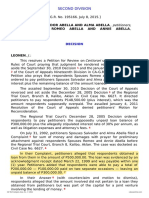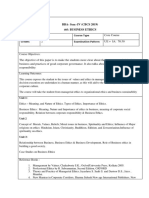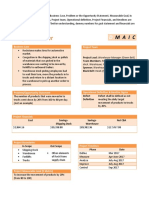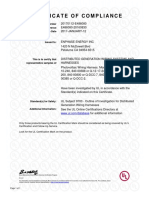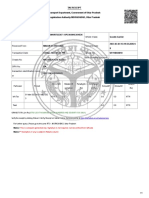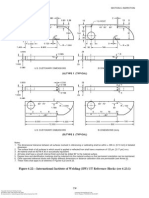0% found this document useful (0 votes)
116 views6 pagesSupply Chain Insights for Businesses
The document discusses supply chain management (SCM) and the role of SCM in businesses. It then discusses Maruti Suzuki, the largest automobile manufacturer in India. Maruti Suzuki has optimized its supply chain to stay ahead of competitors through standardizing modules, outsourcing logistics, and reducing inventory and delivery times. It relies heavily on information technology to coordinate its integrated supply chain, increase productivity, reduce costs, improve products, and increase supply chain transparency.
Uploaded by
Ritu GuptaCopyright
© © All Rights Reserved
We take content rights seriously. If you suspect this is your content, claim it here.
Available Formats
Download as DOCX, PDF, TXT or read online on Scribd
0% found this document useful (0 votes)
116 views6 pagesSupply Chain Insights for Businesses
The document discusses supply chain management (SCM) and the role of SCM in businesses. It then discusses Maruti Suzuki, the largest automobile manufacturer in India. Maruti Suzuki has optimized its supply chain to stay ahead of competitors through standardizing modules, outsourcing logistics, and reducing inventory and delivery times. It relies heavily on information technology to coordinate its integrated supply chain, increase productivity, reduce costs, improve products, and increase supply chain transparency.
Uploaded by
Ritu GuptaCopyright
© © All Rights Reserved
We take content rights seriously. If you suspect this is your content, claim it here.
Available Formats
Download as DOCX, PDF, TXT or read online on Scribd
/ 6
